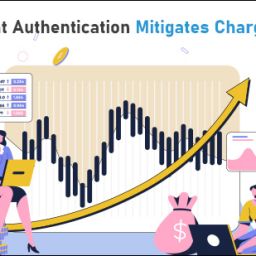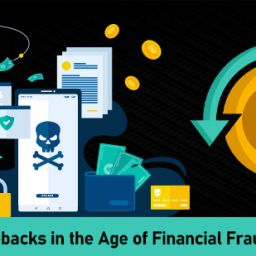
In today’s digital age, online transactions have become the norm for consumers and businesses alike. However, with this convenience comes the risk of fraudulent activities and chargebacks. Chargebacks occur when a customer disputes a transaction and requests a refund from their bank. Causing a financial loss for the merchant.
This can be a major problem for businesses, especially for small and medium-sized enterprises. To combat this issue, the chargeback industry has implemented a powerful tool known as fraud scoring.
This method helps merchants identify and prevent fraudulent transactions, reducing the risk of chargebacks and protecting their business from financial loss. In this blog post, we will explore the concept of fraud scoring and how it can be a game-changer in the chargeback industry.
Understanding Fraud Scoring and Its Importance
Fraud scoring is a sophisticated analytics technique that assesses the likelihood of a transaction being fraudulent. At its core, fraud scoring utilizes a wide array of data points. Such as transaction size, frequency, location, and even the type of goods being purchased, to generate a risk score. This score indicates the probability that a transaction may be fraudulent.
The higher the score, the higher the risk of fraud. This system is crucial in the chargeback industry because it provides an early warning mechanism. Allowing merchants and financial institutions to take preemptive action against potentially fraudulent transactions. By identifying high-risk transactions before they are processed, businesses can significantly reduce the occurrence of chargebacks, saving both time and money.
Moreover, fraud scoring systems are continually evolving. Using machine learning and artificial intelligence to refine and improve their predictive accuracy. This constant innovation ensures that fraud scoring remains a vital tool in the fight against online fraud, adapting to new fraudulent tactics and helping businesses stay one step ahead of fraudsters. Implementing an effective fraud scoring system is therefore essential for any online merchant aiming to safeguard their operations from the financial and reputational damage caused by chargebacks.
Some Related Blogs
- The Ins and Outs of Visa Dispute Arbitration
- Understanding the Importance of a High Return Customer Rate
- Arbitration Chargeback: What You Need to Know
- Dispute Apple Pay Transactions: What You Need to Know
The Mechanics Behind Fraud Scoring Systems
Fraud scoring systems operate by analyzing vast amounts of transactional data through complex algorithms. These algorithms are designed to detect patterns and anomalies that are indicative of fraudulent activity. For example, a system might flag a transaction as high risk if it originates from a geographic location known for high levels of fraud, or if the purchase pattern deviates significantly from a customer’s usual behavior.
Each potential risk factor identified during the transaction analysis is assigned a weighted score. Reflecting its significance in predicting fraud. The cumulative score of these factors then forms the transaction’s overall risk score.
The process involves both static and dynamic elements. Static elements include fixed data points such as the customer’s shipping address or the device ID used for the transaction. Dynamic elements. On the other hand, could involve analyzing the velocity of transactions (how quickly they are occurring) or changes in the transaction value over time.
The integration of these elements enables the fraud scoring system to adapt to emerging fraud trends actively, making it an invaluable tool for preemptive fraud detection and chargeback prevention.
Implementing Fraud Scoring in Your Business
To effectively implement fraud scoring within your business, start by selecting a reputable fraud management solution that aligns with your company’s size. Transaction volume, and industry. Integration typically involves configuring your transaction processing system to communicate with the fraud scoring tool, ensuring seamless data exchange.
It’s crucial to calibrate the scoring model to your specific business needs—this may require adjusting the weights of different risk factors to accurately reflect your customer behavior and fraud risk profile.
Training for your staff on how to interpret fraud scores and take appropriate action is also essential. This includes setting up protocols for manually reviewing transactions flagged as high risk and deciding whether to accept, reject, or request additional verification for these transactions. Continuously monitor the performance of your fraud scoring system, and be prepared to make iterative adjustments as you gather more data on its effectiveness and as your business evolves.
Collaboration with your fraud scoring provider for ongoing support and updates can ensure that your system remains effective against new and emerging fraud threats, helping to keep your chargeback rates low and your business secure.
The Role of Fraud Scoring in Reducing Chargebacks
Fraud scoring directly impacts chargeback reduction by filtering out potentially fraudulent transactions before they culminate in financial losses. When a business integrates a robust fraud scoring system,
it significantly lowers the number of chargebacks by pre-empting fraudulent purchases. This pre-emption is crucial as it not only safeguards the merchant’s revenue but also preserves their relationship with credit card processors and banks, which may impose penalties or higher processing fees on merchants with high chargeback rates.
![]()
Email us anytime!
Email customer service 24/7
![]()
Call us anytime!
Reach customer care 24/7 at +1 (888) 901-8653
Moreover, by decreasing the likelihood of chargebacks, businesses protect their brand reputation from being associated with fraud and enhance customer trust. A lesser-known benefit of effective fraud scoring is the reduction in administrative burdens associated with managing chargebacks, including dispute resolution and compiling documentation, thereby allowing businesses to allocate their resources more efficiently.
Through identifying and declining high-risk transactions, fraud scoring serves as the frontline defense in a multi-layered chargeback prevention strategy, ultimately fostering a more secure and trustworthy online commerce environment for both merchants and consumers.
Best Practices for Maximizing Fraud Scoring Efficiency
To maximize the efficiency of fraud scoring systems, businesses must ensure a dynamic approach to fraud prevention. Continuously updating the fraud scoring model with the latest transaction data helps the system to learn and adapt to new fraud patterns.
Incorporating a feedback loop where the outcomes of flagged transactions are analyzed and fed back into the system is critical for refining the accuracy of fraud predictions. It’s also vital to maintain a balance between detecting fraudulent activities and minimizing false positives, as too many legitimate transactions flagged as fraud can lead to customer dissatisfaction and lost sales.
Integrating external data sources. Such as IP verification services and device fingerprinting technologies. Can enrich the data analyzed by fraud scoring systems. Leading to more nuanced risk assessments. Regularly reviewing and adjusting the thresholds for flagging transactions as high-risk allows businesses to fine-tune the sensitivity of their fraud detection mechanisms according to evolving fraud trends and their risk tolerance.
Collaboration between different departments within the organization. Such as the fraud management team, customer service, and IT. Ensures a holistic approach to fraud prevention and maximizes the effectiveness of the fraud scoring system.




